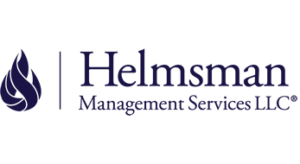Published 05/08/2020

Restarting your manufacturing business may present unique challenges. Our planning guide can help you as you work on your plan. Here are some areas to consider:
Crisis management reopening preparations
- Retain documentation and critique the process used to temporarily close and what was undertaken to reopen. This kind of analysis, perhaps a first of its kind for you, may need to be redeployed at a moment’s notice depending on the potential resurgence of this outbreak. A threat assessment of your vulnerabilities of all your operations will be a vital component to this process. What is the new ‘normal’?
- Prepare a succession plan for critical staff & officers, where special replacements are needed to continue work.
- Consult with association members to share best practices with questions related to business reopening.
- Verify current permits and licenses to re-open and restart, based on local or state ordinances and mandates during the time your operations have been shut-down.
Establishing customer and supply chain commitments
- Consider realignment of your current supply chain where resource provisions can still be met. Take a closer look at your global network of suppliers, both domestic and foreign. Look at how you determine who your suppliers are and where previous commitments can still meet expectations on all sides, including provision of like product or service. Clear any changes through your Quality Assurance and Risk Management functions.
- Explore where past contractual obligations may continue undisrupted and those that need to be reassessed for gaps in fabrication, design, and/or technical support. Use legal counsel to oversee risk transfer provisions reflected in contractual expectations that can be promptly deployed should a supplier defect be later discovered.
- Restoring supplier specs will demand detailed scrutiny on your product quality, influenced by those supplied materials. This also directly affects your product liability risk when substandard parts are used.
- Verify where customer specifications call out machines and materials to use, that may include changes within your supply inventory. In some cases, this may involve some changes with imposed health risk to your workforce with changes in chemical makeup, or overall job safety risks to address before resuming production.
Commissioning machines, equipment and processes
- Can old equipment still fulfill customer expectations? US manufacturers can expect a resurgence in automation and robotics, perhaps at an even greater rate previously forecasted. With global supply fulfillment in question, many US manufacturers are re-shoring their processes in anticipation of quicker turnaround time, reduced expenses (e.g., shipping time, tariffs and other fees) and compromised product quality from the impact of a global workforce recovering from the latent impact of the outbreak.
- Assure a complete follow-through of residual power controls of all forms, including fluid sources, in machines, building support and process piping systems. Examine any effect that idle time has helped deteriorate conditions and performance, such as corrosion, seal damage, leaks or ruptures, etc. This also includes verification that machine safety performance has been verified in full before restoring to full production by revisiting your risk assessments that detail safeguarding systems in use.
- Restarting your processes can present new and unique operational risk to your workers. This could be the first time many of your current workers have restarted your equipment from a dormant state and they may not be aware of all the hazards that could be present. Carefully prepare and follow restart procedures for idled equipment; use the equipment manufacturers guidance, if available.
- Do your critically skilled workers need upgrades to address changes in product line changes or customer demands? Re-visit skills needed to setup, maintain, and run critical tasks of those workers you recall for reopening. If you are exploring more automation or a significantly different process or customer contracts, you’ll need to specify job skills using your HR department to help fill gaps.
- Revisit your hazardous energy control plan to assure it is fluently understood and practiced in both anticipated maintenance functions. Be sure to revisit alternative measures when power may be necessary to clear jams, make adjustments, or perform other tasks not possible without some form of controlled power.
- Be certain to implement a sustainable workplace cleaning and disinfection process based on the needs of your operations; at a minimum, clean after each shift concludes BEFORE operations begin on the next. This may be a service that is more effectively and consistently done by a contracted service provider who specializes in that work. Continue to follow CDC and local guidance affecting cleaning protocol and how it complies.
- If contractual obligations and production demands have changed, reexamine changes in applicable consensus standards affecting product safety within necessary design improvements or fabrication processes.
Workforce preparedness and communication
- Be certain to conduct daily operations within CDC and OSHA guidance for workplace safety and health.
- Carefully consider and address the needs and concerns of your returning workforce. Expand the opportunities for workers to have input on problems and concerns.
- Clearly communicate the plan to ensure their health and safety including social distancing precautions, personal protective equipment, if applicable, cleaning, disinfecting, hand washing expectations/ procedures.
- Consider that worker stamina may have been affected by the layoff and transition periods may be needed such as providing opportunities to re-acclimate to highly repetitive physically demanding tasks.
- Shift work sleep patterns may have been disrupted during downtime – carefully plan for restarting of shift work.
- Use pre-shift safety meetings to frequently communicate updates and respond to concerns.
IIoT security
- Using a cross-functional team of high-level workers, carefully examine the move of secured data access from the home work environment returning to company sites, accounting for all users and equipment (hardware and software) and any transactional data and highly sensitive information.
- Appoint a key functional role who is responsible for verifying data acquisition and security in place before production processes are re-commissioned. This likely will involve a strategic risk assessment with your team to identify security gaps in data transmission so that startup can begin in a safe manner.
Building condition and functional capability
- Assess changes in neighborhood dynamics that may pose a threat to your business or property over the time your business has been closed (e.g., traffic patterns, yard storage and security, lighting, etc.).
- Verify building security and fire protection features are fully operational and service agreements can be renewed without gaps. Obtain inspections from authorities that conditions are favorable for opening.
- Re-examine life safety provisions to verify safe and clear egress and unobstructed exit paths at any point in your building have not been compromised in this downtime. Note that your exit routes will now need to account for social distancing minimum spacing.
- Assess the physical condition of your building and outside storage, lots, etc.
- Assure proper working order of critical services preservation (HVAC, fire suppression, CO detection, life safety, alarms, etc.)
- If you intend to provide onsite food services of any kind, you’ll need supplies and safe means of prep and storage for short and long-term sustenance.
Additional resources:



